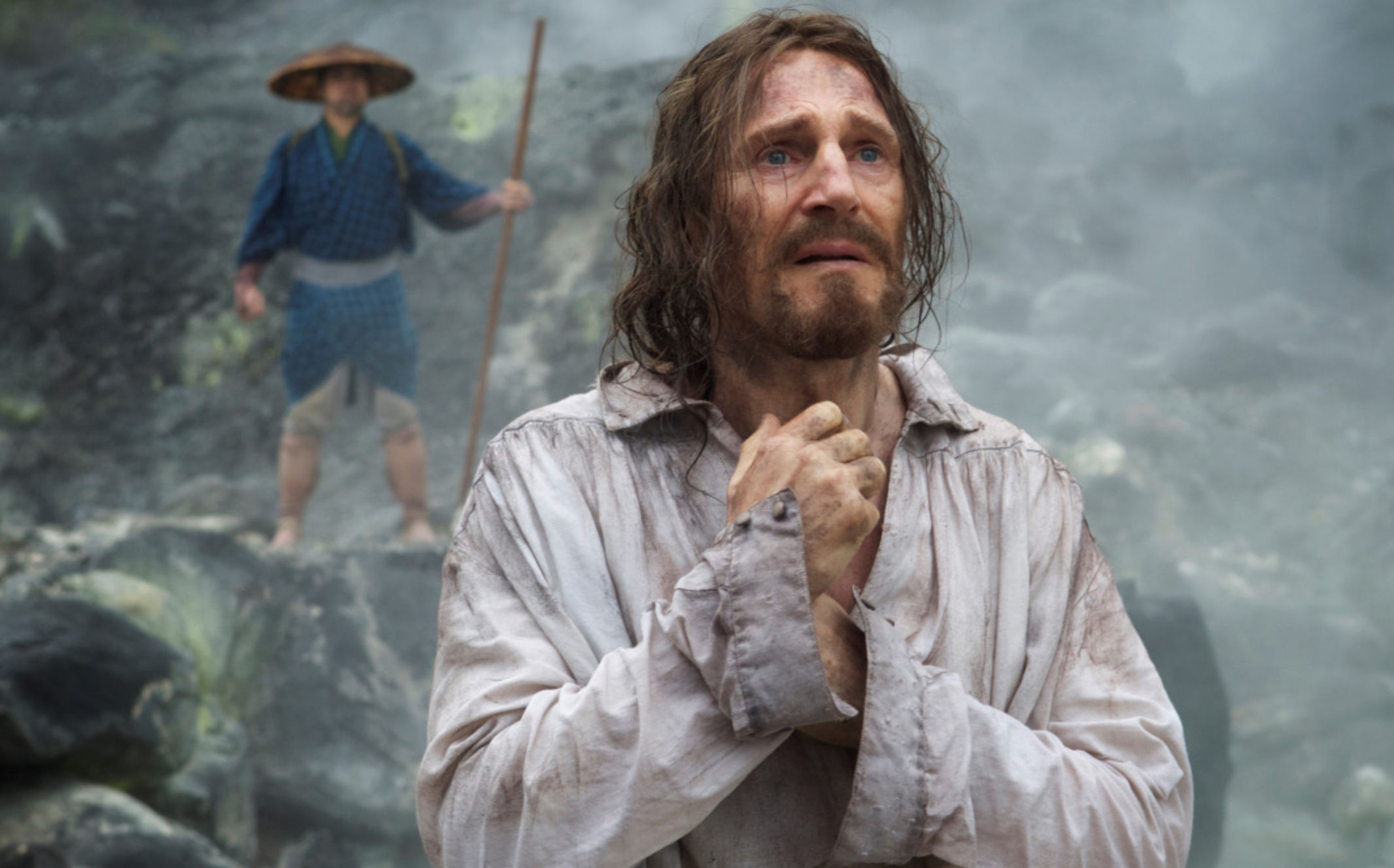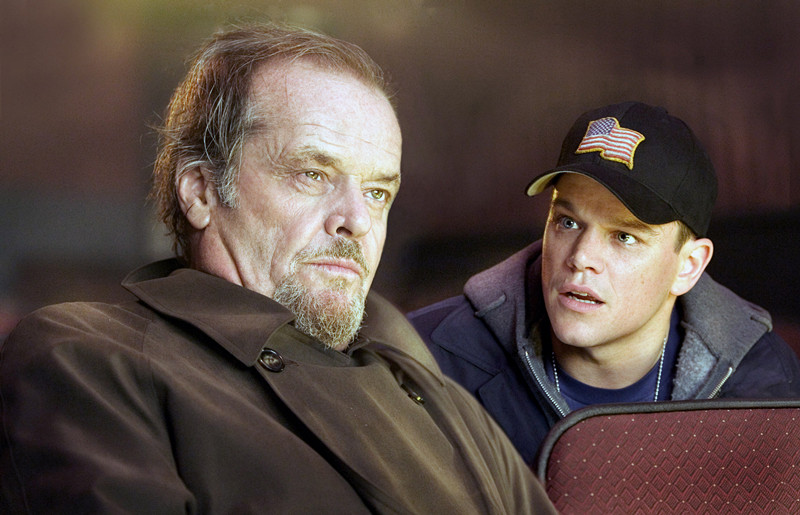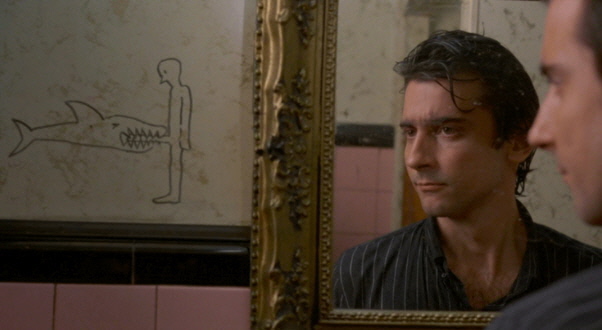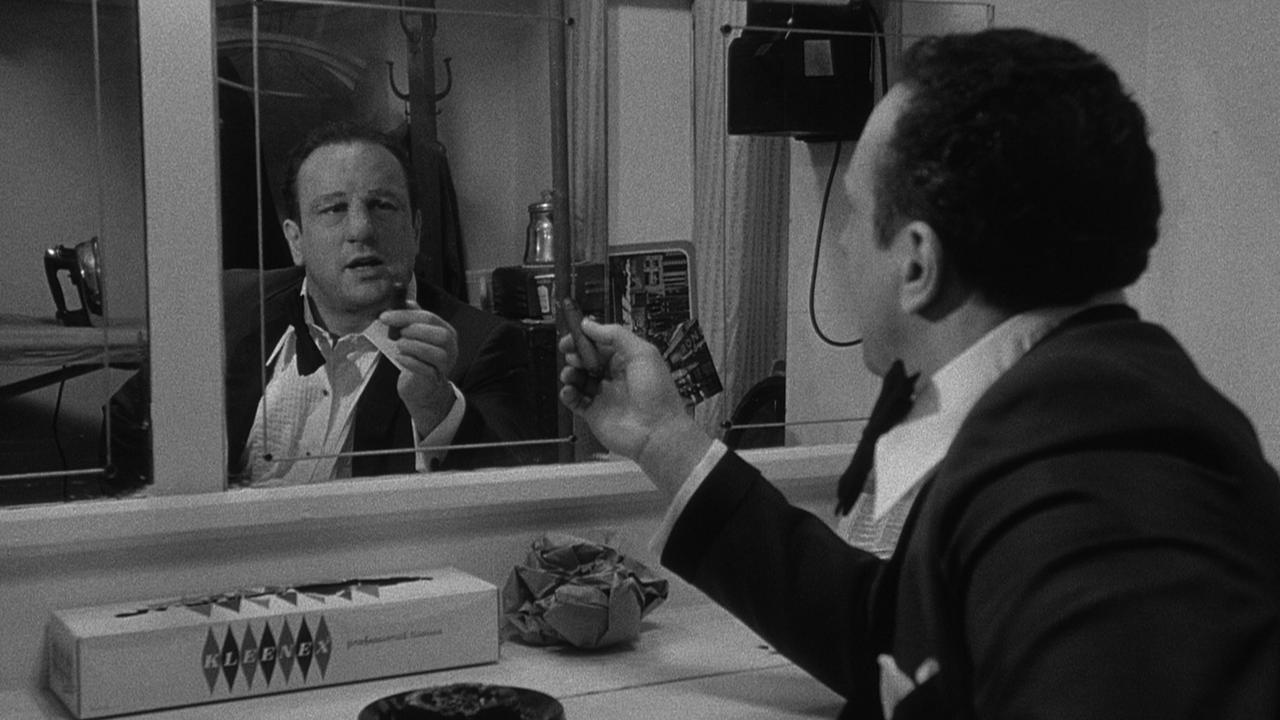
Martin Scorsese is amongst the most famous and well-known of American film directors, creating works of both popular appeal and critical acclaim for five decades. But what separates Scorsese from other directors, in addition to his proficiency, is the way that his work almost always engages with larger questions and ideas, particularly those that can be understood as religious in some essential way.
In that regard, Scorsese is truly an auteur, like an author of great literature, crafting works that are subtle and within their subtext explore complex and weighty ideas revolving around if there is a God, what the nature of man is, whether there is meaning to life, what is good and right (versus what is evil and wrong), and other questions that religious thought often attempts to tackle.
Here are the ten films directed by Scorsese that are most engaged with these questions of religion, more often than not taking on a Catholic focus or tinge.
10. The Departed

The topic of religion and Scorsese can be broken down in two ways when it comes to how he addresses or engages with the religious—through a representation of religion and the lives of those who believe in a specific religion or by contending with those questions that religion and the religious believer seeks to answer. The Departed does an interesting job of yoking the two together.
Rather than the Italian-American brand of Catholicism to which he would return in many of his films, in this film Scorsese draws upon the Irish-American Catholicism so prevalent in Boston where he sets his adaptation of Infernal Affairs, representing the two sides of the Irish-American father figure with the good (Martin Sheen’s Capt. Queenan) and the bad (Jack Nicholson’s Frank Costello). Beyond this, the film touches upon issues of morality and identity, issues that carry in them a religious charge.
One of the film’s most famous lines, spoken by Nicholson’s Frank Costello in the opening, is “When I was your age they would say we can become cops, or criminals. Today, what I’m saying to you is this: when you’re facing a loaded gun, what’s the difference?” This line, which also calls to mind the famous line from Flannery O’Connor’s short story “A Good Man Is Hard to Find” (“She would of been a good woman […] if it had been somebody there to shoot her every minute of her life”).
The Departed depicts those choices one makes when faced with the literal loaded gun or the more metaphorical specter of morality and the path one chooses to take, shown in the parallel lives of Leonardo DiCaprio’s Billy Costigan and Matt Damon’s Collin Sullivan and the choices they make in the outward face they give to the world as well as in what they believe.
9. Who’s That Knocking on My Door

Scorsese’s first feature film is one that feels nakedly autobiographical in the sense that the conflict Scorsese depicts, that having to do with J.R. (played by Harvey Keitel) and his guilt, particularly guilt related to sexuality and female purity, that is religiously influenced. J.R.’s guilt and trepidation regarding his girlfriend and discovering that she had been raped (and is thus not virginal) is profoundly informed by his Catholicism and Catholic belief.
Here Scorsese is depicting a very central struggle at the heart of much religious thought, but particularly Catholicism, between the materialistic and worldly against the spiritual and ethereal, shining a light on the negative consequences and distortions that can emerge as one confronts this.
Scorsese even alludes to some of the hypocrisies that emerge from this thinking, particularly amongst the men who hold these beliefs, showing J.R. fantasizing about having sex and having some sort of agency regarding sex while his girlfriend’s having had her virginity taken from her is something that J.R. must overlook and forgive if he can ever be with her.
While Scorsese would explore and expand upon in Mean Streets, here he lays the groundwork and sets the stage for this examination of Catholic guilt and introduces us to the particular kind of Catholicism in which he, as an Italian-American, was raised.
8. Wolf of Wall Street

Wolf of Wall Street is a film that not many would think of in a religious context or having any “religious” significance. From its depiction of gratuitous wealth and consumption to the excessive (even by Scorsese’s standards) use of profanity to the abundance of sex and naked women, Wolf of Wall Street feels like a film that could not be more disconnected from religion, at least upon first glance.
However, it is just this quality that defines it as an important one in Scorsese’s ongoing consideration of religion What Scorsese depicts in this film, and what makes it a film of what we can understand as religious importance, are notions of temptation, sin, and earthly power that runs contrary to the teachings of much of organized religious, particularly the Scorsese’s Catholicism. Jordan Belfort, as portrayed by Leonardo DiCaprio, is someone who has achieved the heights of earthly power and Scorsese depicts the ways in which those heights corrupt and rot the soul, the humanity of an individual.
In interviews, Scorsese has defended his film against charges that it glorifies the wealth and lifestyle of Belfort and his business partners, a lifestyle largely supported by illegal and immoral financial dealings, by saying that you need to depict why people would feel tempted by this life and be willing to do whatever was necessary to live that life.
In that regard, Wolf of Wall Street is like a modern depiction of what Satan tempted Jesus with as he fasted in the desert, taking him to atop a high mountain and offering him dominion over all the earth if he worships him. It is what one can acquire if they turn away from God or the good and focus instead on materialistic and earthy, that which religion (particularly as Scorsese conceives of it) rejects.
7. After Hours

Another film, somewhat like Wolf of Wall Street, that would not seem to have a religious bent to it is Scorsese’s black comedy After Hours. However, this film, one of Scorsese’s more overlooked and under discussed films, reflects Scorsese’s religious interests, particularly as it pertains to suffering.
At one point in the film, Paul (played by Griffin Dunne) falls to his knees, and cries to the night sky as his efforts to return to his apartment from SoHo are constantly thwarted, “What do you want from me? What have I done? I’m just a word processer!”
Paul must wrestle with the meaning of his plight and suffering, which Roger Ebert in his review of the film notes how it mirrors the story of Job in the Old Testament. Paul’s “odyssey” might be understood as a dark night of the soul, his peripatetic state and inability to get home mirroring an isolated and disconnected nature that befalls the modern man.
The song that Paul plays in the jukebox at the end of the film, “Is That All There Is?” by Peggy Lee, reflects this quality, questioning what is it that makes a life and makes life good and highlights the large questions the film wrestles with.
6. Raging Bull

Suffering and redemption play an enormous role in Raging Bull, a film depicting the life of infamous heavyweight boxer Jake LaMotta. Scorsese was initially not interested in the film, as his interest in boxing was minimal and the reprehensible aspects of LaMotta’s life were equally off-putting.
However, in the director’s hands, the film became something more than just a biopic of a once-great boxer but rather a depiction of both the depths of darkness into which one can enter as well as the possibility of redemption. Scorsese depicts LaMotta’s climb up the middleweight ranks to the championship level before he loses his title and his life begins to crumble.
Towards the film’s conclusion, we witness LaMotta at his nadir, overweight and slovenly, thrown into a dark jail cell under suspicion of inviting and soliciting underage women at his nightclub, frantically banging his head and fists into the cement wall, crying out “I am not an animal!” before breaking down into sobs.
At the film’s ending, we see LaMotta delivering Brando’s famous monologue from On The Waterfront into a mirror before going out to perform his nighclub act, then riffing off of it as a way of talking about his own life.
It is a man who has some understanding of himself and can move forward, as the screen goes black before displaying the text: “So, for the second time, [the Pharisees] summoned the man who had been blind and said: ‘Speak the truth before God. We know this fellow is a sinner.’ ‘Whether or not he is a sinner, I do not know,’ the man replied. ‘All I know is this: Once I was blind and now I can see.’ John IX. 24–26, The New English Bible.”
LaMotta’s punishment, both in the ring (there is one image of him beaten against the ropes that resembles how Christ might look on a crucifix) and out have allowed him to atone for his sins and that there might be the possibility of redemption even for the greatest of sinners.